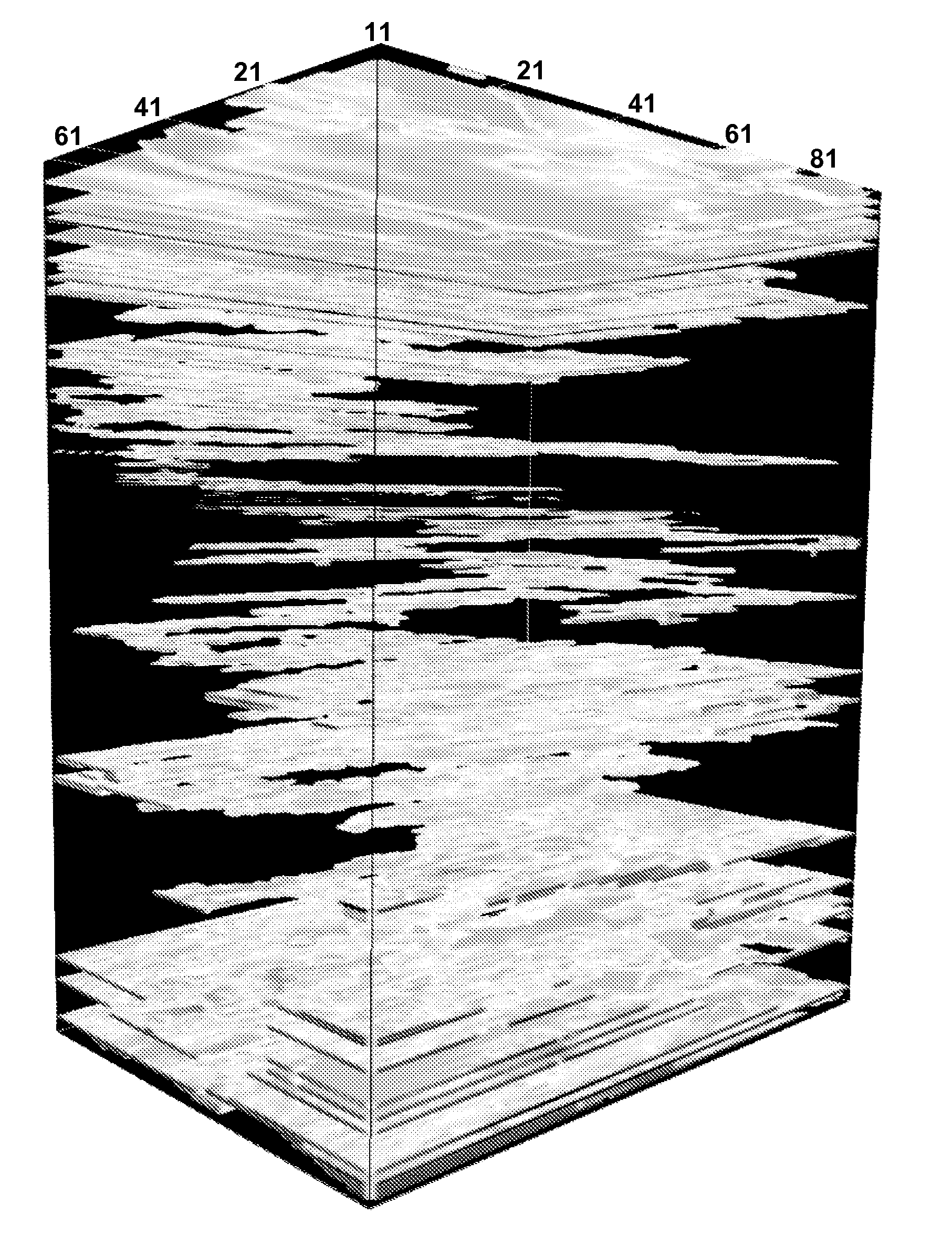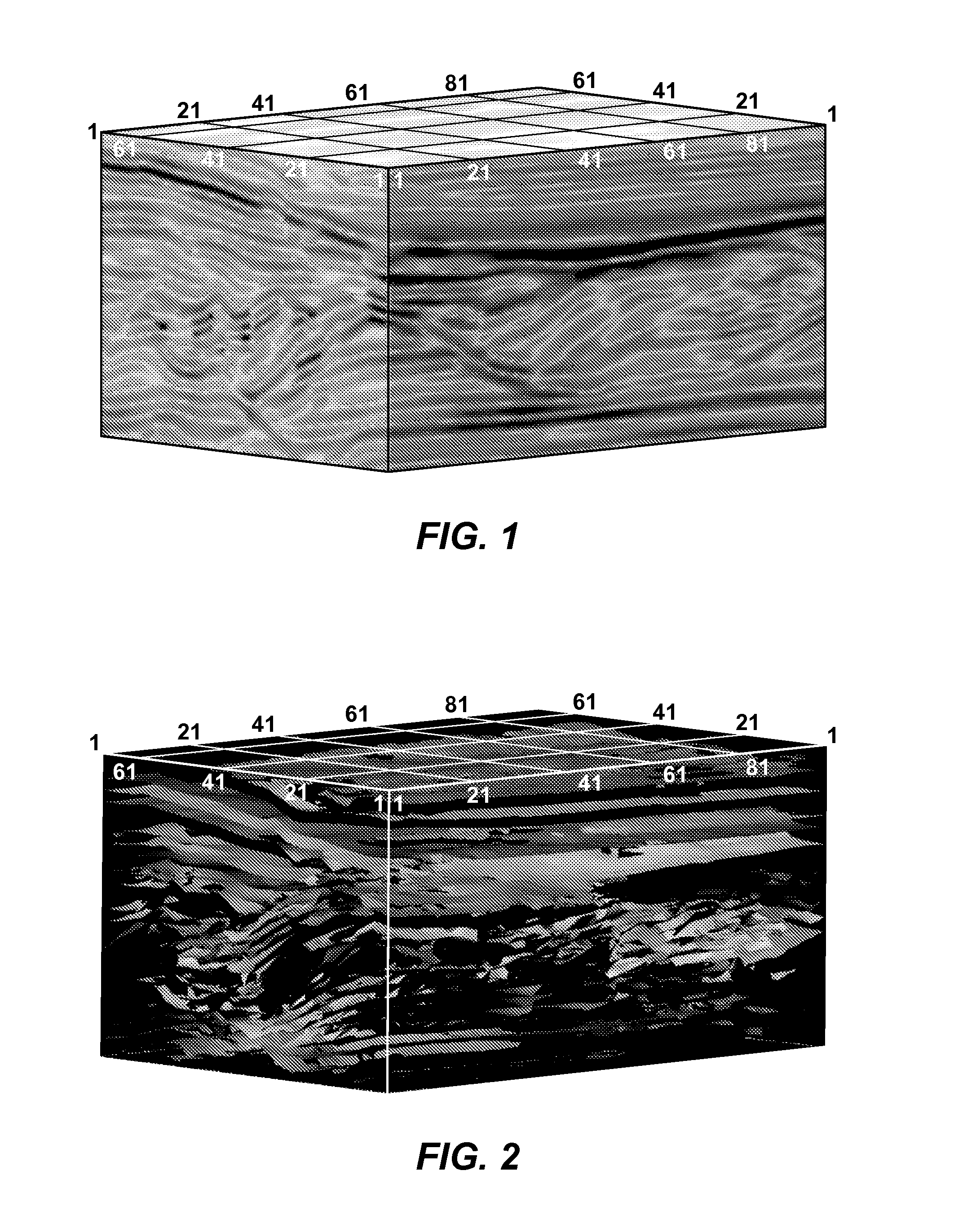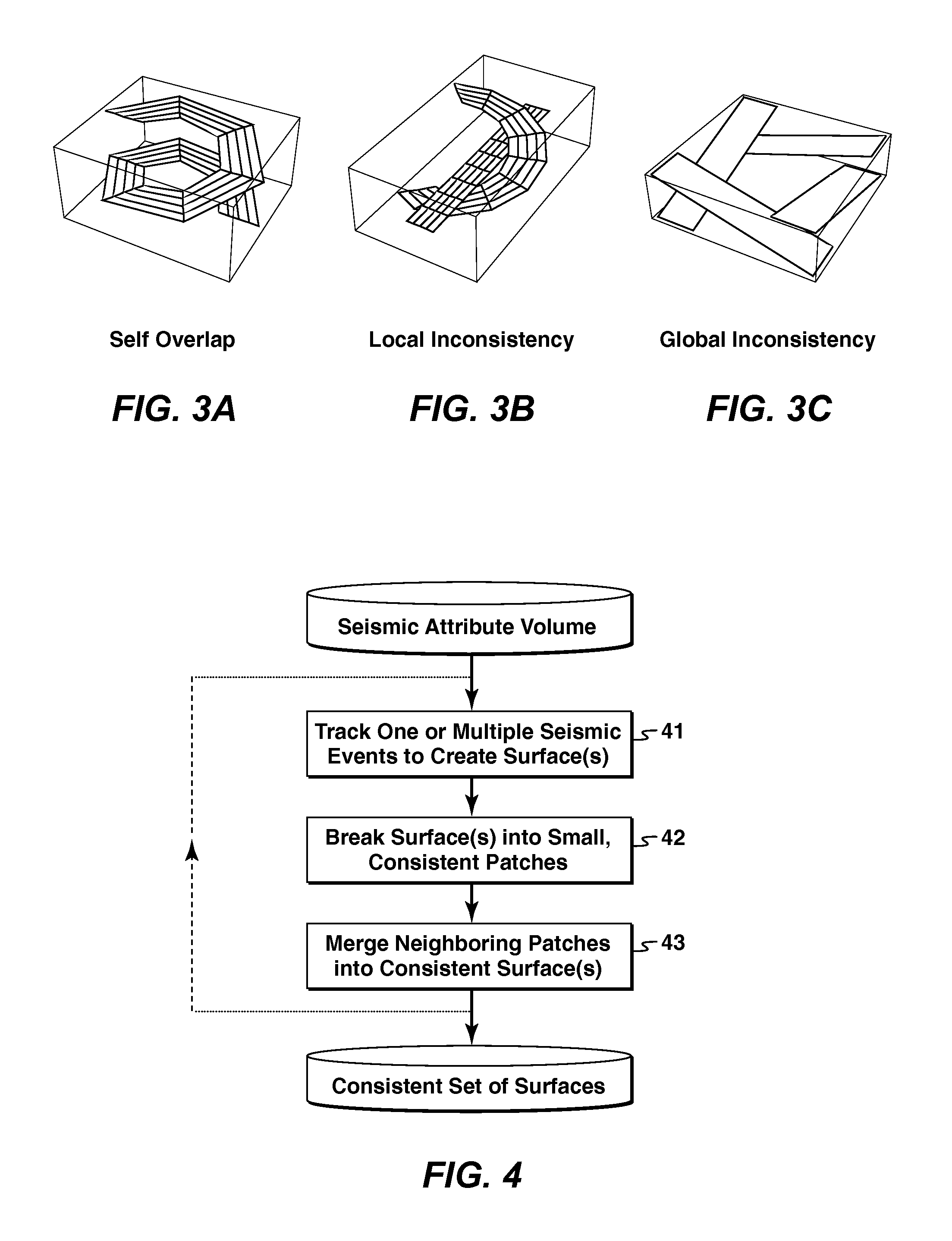Seismic Horizon Skeletonization
a seismic horizon and skeletonization technology, applied in the field of seismic data analysis, can solve the problems of short successful paths, no topology or topological consistency, and no reference discloses the creation of surfaces, etc., to reduce storage or computational efficiency requirements
- Summary
- Abstract
- Description
- Claims
- Application Information
AI Technical Summary
Benefits of technology
Problems solved by technology
Method used
Image
Examples
Embodiment Construction
[0056]In order to search for hydrocarbon accumulations in the earth, geoscientists are using methods of remote sensing to look below the earth's surface. A routinely used technique is the seismic reflection method where man-made sound waves are generated near the surface. The sound propagates into the earth, and whenever the sound passes from one rock layer into another, a small portion of the sound is reflected back to the surface where it is recorded. Typically, hundreds to thousands of recording instruments are employed. Sound waves are sequentially excited at many different locations. From all these recordings, a two-dimensional (2D) or three-dimensional (3D) image of the subsurface can be obtained after data processing. Seismic interpretation often involves the picking of surfaces to characterize the subsurface for the delineation of underground features relevant to the exploration, identification and production of hydrocarbons. The present invention describes a method to pick ...
PUM
 Login to View More
Login to View More Abstract
Description
Claims
Application Information
 Login to View More
Login to View More - R&D
- Intellectual Property
- Life Sciences
- Materials
- Tech Scout
- Unparalleled Data Quality
- Higher Quality Content
- 60% Fewer Hallucinations
Browse by: Latest US Patents, China's latest patents, Technical Efficacy Thesaurus, Application Domain, Technology Topic, Popular Technical Reports.
© 2025 PatSnap. All rights reserved.Legal|Privacy policy|Modern Slavery Act Transparency Statement|Sitemap|About US| Contact US: help@patsnap.com



